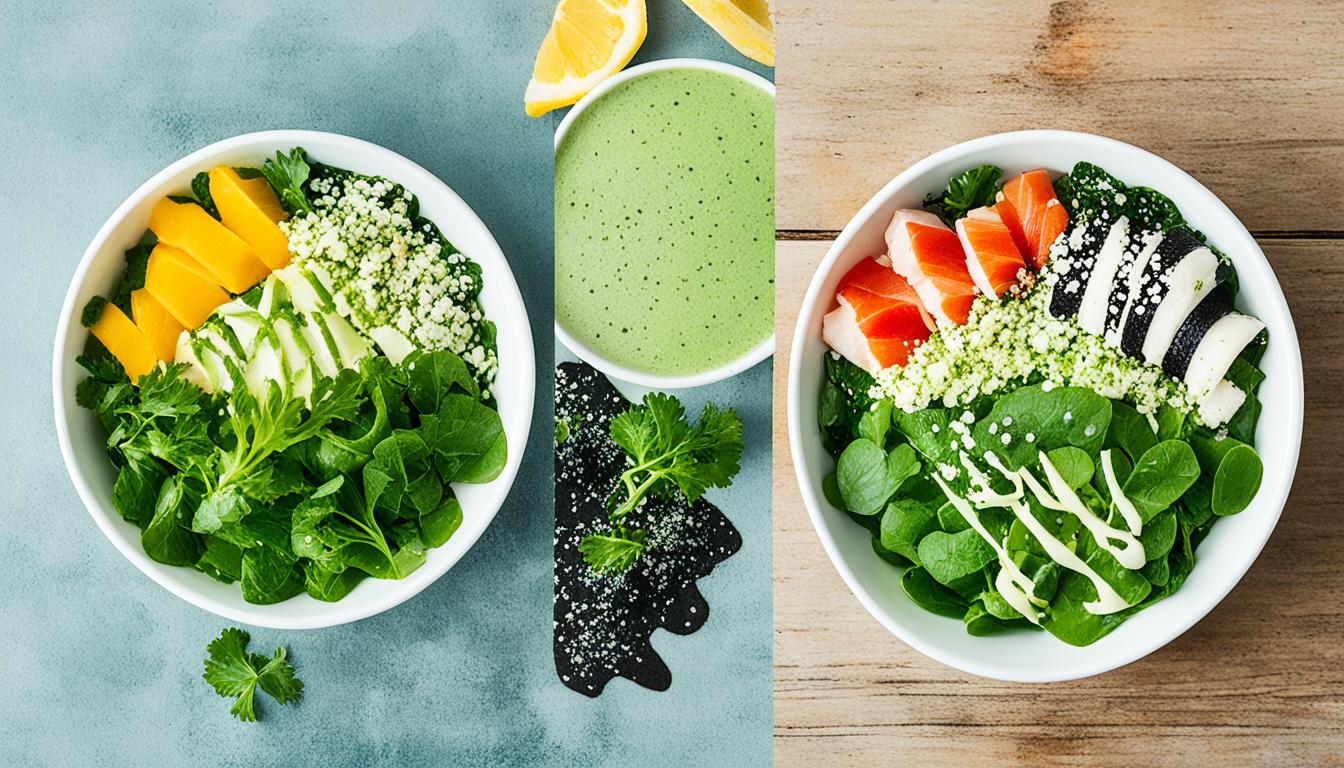Are you missing out on the incredible benefits of seaweed in your cooking? Have you ever wondered how to incorporate kelp, nori, wakame, and other sea vegetables into your meals? Look no further! In this seaweed guide, we will show you how to use these amazing ingredients effectively to enhance your dishes and promote your well-being. Get ready to dive into the world of seaweed and discover its surprising flavors, nutrition, and culinary possibilities!
Seaweed, including kelp, nori, wakame, and other sea vegetables, offers a plethora of nutrition, health benefits, and culinary possibilities. From boosting umami flavors to providing essential vitamins and minerals, seaweed is a versatile and sustainable ingredient. In this seaweed guide, we will explore the various types of seaweed, their uses in cooking, and the health benefits they offer. Discover how to incorporate kelp, nori, wakame, and other sea vegetables into your meals for enhanced flavor and well-being.
Understanding the Different Types of Seaweed
Seaweed is a broad term that encompasses various types of red, brown, and green algae. Each seaweed variety offers unique flavors and textures, making it suitable for different culinary applications. Let’s explore some of the most popular seaweed types:
Kelp
Kelp, a brown seaweed, is known for its meaty and umami flavor. It is often used in broths and soups to enhance taste and depth. You can also use kelp as a seasoning to add a savory punch to your dishes.
Nori
Nori, a red seaweed, is commonly used in sushi rolls. It has a delicate and slightly salty taste, making it perfect for wrapping around ingredients or using as a flavorful topping. Nori adds a pleasant contrast to the textures of sushi rolls.
Wakame
Wakame, a green seaweed, has a mild and sweet flavor. It is a popular choice for miso soup and salads, adding a refreshing taste and a touch of natural sweetness to the dish.
Kombu
Kombu is another type of brown seaweed that is highly prized for its rich umami taste. It is commonly used in Japanese cuisine as a base for dashi broth, which forms the foundation for many traditional dishes. The umami flavor provided by kombu enhances the overall taste of the dish.
Understanding the characteristics and flavor profiles of these seaweed types will help you choose the right one for your recipes. From kelp to nori, wakame to kombu, incorporating different seaweeds into your cooking can elevate the flavors of your dishes and introduce you to new taste experiences.
Next, we’ll delve into some tips for using seaweed in your cooking to help you make the most of these incredible sea vegetables.
Tips for Using Seaweed in Your Cooking
When incorporating seaweed into your cooking, there are a few essential tips to keep in mind. First, if using dried seaweed, it’s important to rehydrate it in cold water before adding it to your recipes. This will ensure a pleasant texture and maximize the flavor of the seaweed.
Additionally, it’s crucial to be mindful of the amount of seaweed you use, as its flavors can be quite potent. It’s best to start with small amounts and adjust to your taste preferences. Seaweed can be a versatile ingredient that adds depth and complexity to various dishes, such as soups, salads, stir-fries, or even as a seasoning for rice and vegetables.
Experimenting with different combinations of seaweed and other ingredients can help you discover unique flavor profiles that suit your preferences. However, it’s important to source your seaweed from reputable suppliers or harvest responsibly, considering factors such as sustainability and cleanliness. By following these tips, you can confidently embrace the use of kelp, kombu, nori, wakame, and other sea vegetables, elevating the taste of your dishes while enjoying the numerous health benefits they offer.
